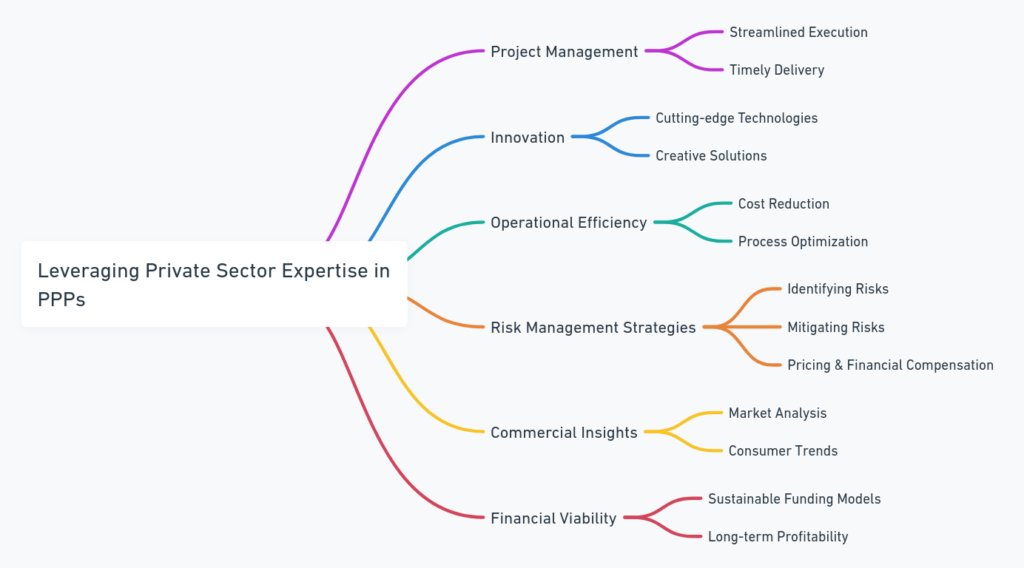In the vibrant tapestry of modern business development, Public-Private Partnerships (PPPs) have emerged as a beacon of innovation and growth. These strategic alliances between the public sector and private enterprise serve as a catalyst for transforming visionary ideas into tangible realities. By combining the strengths of both sectors—public objectives with private efficiency and creativity—PPPs provide a fertile ground for aspiring entrepreneurs to cultivate their ventures. This unique collaboration not only offers access to essential resources and networks but also establishes a solid foundation for innovation, propelling businesses toward unprecedented success.
The Essence of PPPs in Development
At the heart of PPPs lies the principle of symbiotic collaboration, a dynamic union that pools resources from the public and private sectors to achieve goals that would be out of reach for either party on its own. This partnership model is not just about sharing financial burdens; it’s about merging visions, expertise, and capabilities to spearhead projects that drive societal progress and economic prosperity. The essence of PPPs in development extends beyond mere project completion; it embodies a commitment to sustainability, ensuring that the ventures not only flourish in the present but also contribute to the long-term well-being of communities and industries alike. By fostering such inclusive growth, PPPs play a pivotal role in broadening the impact of business initiatives across various sectors, from infrastructure and healthcare to education and environmental conservation.
Risk Management in PPPs

Risk management stands as a linchpin in the successful implementation of Public-Private Partnerships (PPPs), differentiating these collaborations from traditional public procurement processes. In PPP arrangements, the private sector is not merely a recipient of funds or a contractor but a partner that actively engages in managing, pricing, and bearing the financial consequences of risks. This involvement is fundamental, as the nature of PPPs often encompasses large-scale, long-term projects where uncertainties and potential pitfalls abound.
The private sector’s expertise in risk management is thus a crucial asset, enabling the identification, assessment, and mitigation of risks throughout the lifecycle of a project. This proactive stance towards risk ensures that PPP projects are not just completed, but are executed in a manner that upholds sustainability and profitability over the long term. For instance, a 10% cost overrun in a privately-managed project can have significant financial implications, driving private entities to develop robust risk management strategies that encompass everything from project development to operational phases.
Aligning Objectives and Mitigating Misalignments
Achieving harmony in objectives between the public and private sectors is one of the most nuanced aspects of PPPs. Discrepancies in risk perception and management can result in misalignments that, if not addressed, could lead to project inefficiencies or even failures. The public sector, with its focus on public welfare and service delivery, and the private sector, driven by profitability and efficiency, must find common ground to ensure the success of a PPP.
Clear communication and the establishment of shared goals are essential to bridge any gaps between public and private objectives. This involves not only a mutual understanding of the project’s aims but also an appreciation of each party’s capabilities and expectations. Successful PPPs often feature comprehensive agreements that outline the allocation of risks, responsibilities, and rewards in a manner that aligns with the interests of both sectors.
Moreover, the process of aligning objectives underscores the importance of viewing PPPs not just as financial transactions but as strategic partnerships aimed at delivering public value through private efficiency. Addressing potential misalignments early on through open dialogue and flexible planning can help ensure that PPP projects are implemented smoothly and achieve their intended outcomes, thereby contributing to broader development goals.
Leveraging Private Sector Expertise
The cornerstone of Public-Private Partnerships (PPPs) lies in harnessing the private sector’s mastery in project management, innovation, and operational efficiency. This partnership goes beyond mere financial investment, tapping into the private sector’s adept risk management strategies and deep commercial insights. These elements are crucial for navigating the complexities inherent in delivering large-scale projects. The private sector’s capability to manage risks—not just by identifying and mitigating them but also by pricing and financially compensating for these risks—sets a solid foundation for PPP projects. This approach ensures that PPPs not only achieve their developmental objectives but also remain financially viable and sustainable over the long term. The intrinsic value of PPPs is significantly amplified by the private sector’s contribution, making complex and ambitious projects feasible and successful.
Conclusion: Crafting a Framework for Success
Public-Private Partnerships stand as a testament to the power of collaboration, offering a promising avenue for entrepreneurial development characterized by innovation and sustainable growth. The essence of PPPs lies in a balanced fusion of public aims with private sector efficiency and insight, creating a synergistic environment conducive to the realization of complex projects. For aspiring entrepreneurs, understanding the intricacies of PPPs—including the nuances of risk management, the importance of aligning objectives between public and private entities, and the strategic leverage of private sector expertise—is crucial. This comprehension equips them with the knowledge to effectively navigate the challenges and opportunities of development projects, transforming innovative ideas into thriving, successful ventures. In the realm of PPPs, the collaboration between the public and private sectors opens up new horizons for achieving developmental goals, setting a precedent for future initiatives aimed at fostering economic growth and societal advancement.

Thomas J. Powell is the Senior Advisor at Brehon Strategies, a seasoned entrepreneur and a private equity expert. With a career in banking and finance that began in 1988 in Silicon Valley, he boasts over three and a half decades of robust experience in the industry. Powell holds dual citizenship in the European Union and the United States, allowing him to navigate international business environments with ease. A Doctor of Law and Policy student at Northeastern University, he focuses on middle-income workforce housing shortages in rural resort communities. He blends his professional acumen with a strong commitment to community service, having been associated with the Boys and Girls Clubs of America for over 45 years. Follow Thomas J Powell on LinkedIn, Twitter,Crunchbase.

